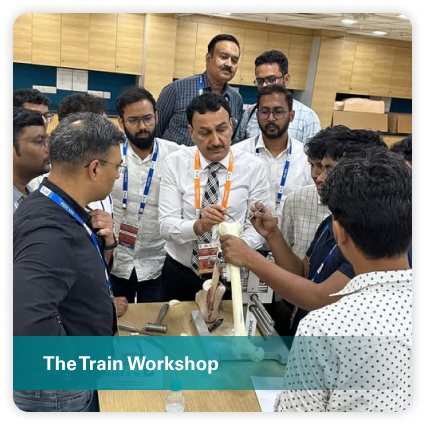Ankylosing Spondylitis – How to Win the Battle
By Dr. Rajeev K Sharma – Senior Orthopaedic & Joint Replacement Surgeon, New Delhi
Ankylosing Spondylitis (AS) is a chronic, inflammatory condition that primarily affects the spine and sacroiliac joints. It often begins in early adulthood and can lead to severe pain, stiffness, and eventual fusion of the vertebrae. For many, it’s a life-altering diagnosis—but the good news is, with the right strategies and care, it’s possible to manage AS effectively and lead a full, active life.
This blog explores how patients can take control of Ankylosing Spondylitis—understanding the disease, recognizing early signs, adopting evidence-based treatments, and embracing lifestyle measures that truly work.
What is Ankylosing Spondylitis?
Ankylosing Spondylitis is a type of seronegative spondyloarthropathy, a form of arthritis that primarily affects the axial skeleton (spine and pelvis). It is strongly associated with the HLA-B27 gene, which is present in the majority of AS patients.
- Chronic back pain and stiffness, especially in the lower back and hips
- Morning stiffness that improves with activity
- Pain that starts in early adulthood (often before age 40)
- Improvement with exercise, but not with rest
- Progressive stiffness in the spine, which may lead to fusion (“bamboo spine”)
- Inflammation in other areas such as the eyes (uveitis), chest wall, heels, and rarely the heart and lungs
Early Diagnosis is Crucial
AS often goes undiagnosed for years, as early symptoms may mimic mechanical back pain or be dismissed as postural issues. Unfortunately, delayed diagnosis can lead to irreversible damage.
Warning signs include:
- Persistent lower back pain for more than 3 months
- Pain that worsens at rest and improves with movement
- Family history of spondyloarthropathy
- Recurrent episodes of eye inflammation (uveitis)
- Unexplained fatigue or weight loss
If these symptoms are present, prompt evaluation by a rheumatologist or orthopaedic specialist is essential.
Investigations for AS
- X-rays of the pelvis and spine may reveal changes in the sacroiliac joints
- MRI is highly sensitive for early inflammatory changes
- Blood tests for HLA-B27, ESR, and CRP levels
- Clinical examination and detailed history remain foundational
Winning Against AS – Management Strategies
There’s no permanent cure for AS, but there are powerful ways to control the disease, reduce symptoms, and prevent deformities.
1. Medication
- NSAIDs (Non-steroidal anti-inflammatory drugs) are the first line to control pain and stiffness
- DMARDs (Disease-Modifying Anti-Rheumatic Drugs) may help in cases with peripheral joint involvement
- Biologics like TNF inhibitors (adalimumab, etanercept, infliximab) and IL-17 inhibitors (secukinumab) revolutionize AS treatment and help halt disease progression
- Steroids in specific situations, but not routinely
2. Physiotherapy – The Real Game Changer
Consistent physical therapy is the cornerstone of AS management:
- Postural training to prevent spinal deformity
- Stretching exercises to maintain flexibility
- Breathing exercises to improve chest wall expansion
- Hydrotherapy and yoga can also be highly beneficial
Daily, structured movement is more effective than medications alone.
3. Surgery
In advanced cases where deformity is severe or joints like hips are affected, joint replacement surgery can restore mobility and reduce pain dramatically. Spinal osteotomies may also be considered in select cases.
4. Lifestyle Management
- Quit smoking – it worsens spinal stiffness
- Healthy weight – excess weight increases joint stress
- Ergonomic work setups and sleep positions
- Mental health support – chronic pain and disability can affect emotional well-being
Staying Ahead – Long-Term Outlook
With early and ongoing treatment, most AS patients can maintain a high quality of life. Regular follow-ups, exercise adherence, and disease monitoring are key. Most importantly, staying proactive rather than reactive can help prevent severe spinal fusion and disability.
Key Takeaways
- Ankylosing Spondylitis is a chronic spinal inflammatory condition that begins early in life.
- It is manageable—early diagnosis and disciplined treatment can prevent major complications.
- Physiotherapy and biologics are game changers in today’s management of AS.
- Patients must be empowered to take charge through movement, medication, and lifestyle.
Ankylosing Spondylitis doesn’t have to control your life—you can control it. With the right plan and expert care, you can win against AS and live life with strength and flexibility.

